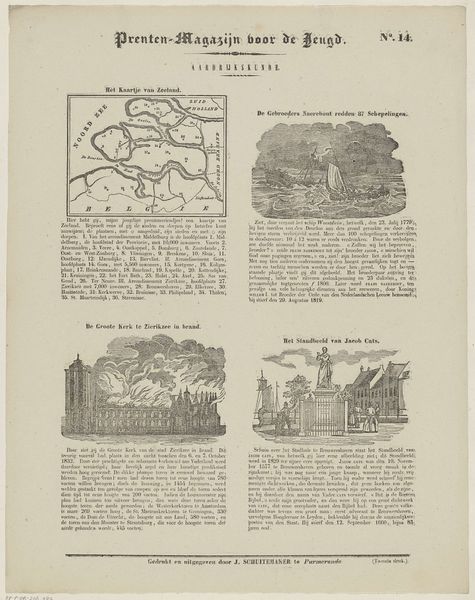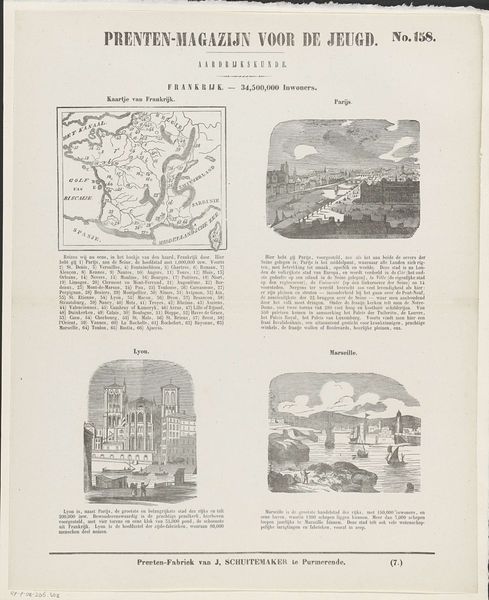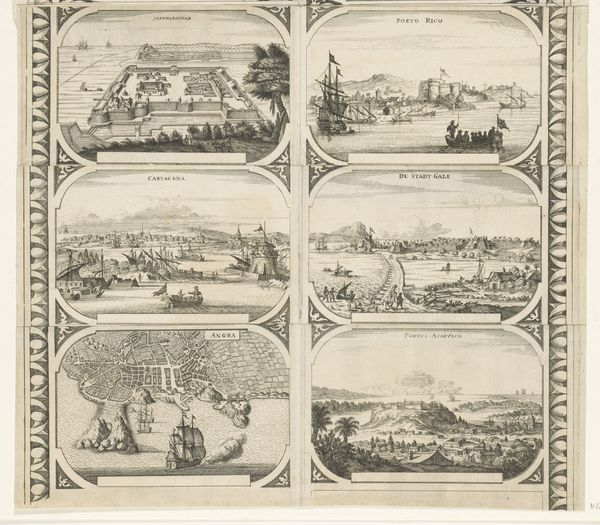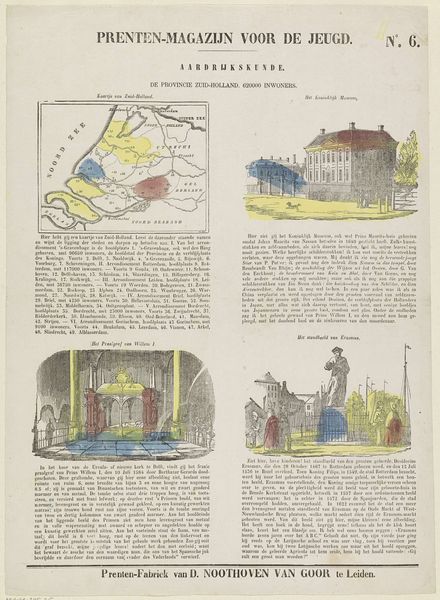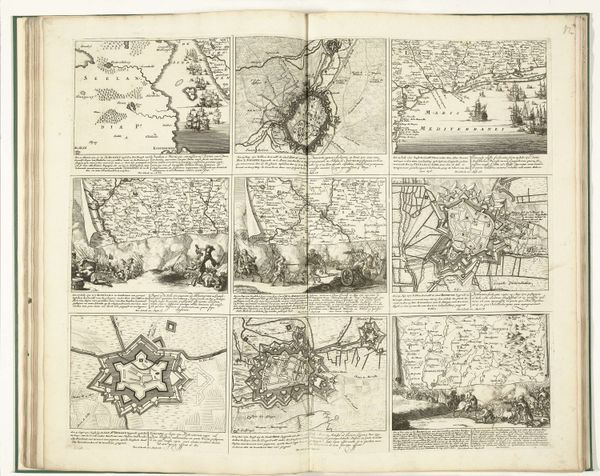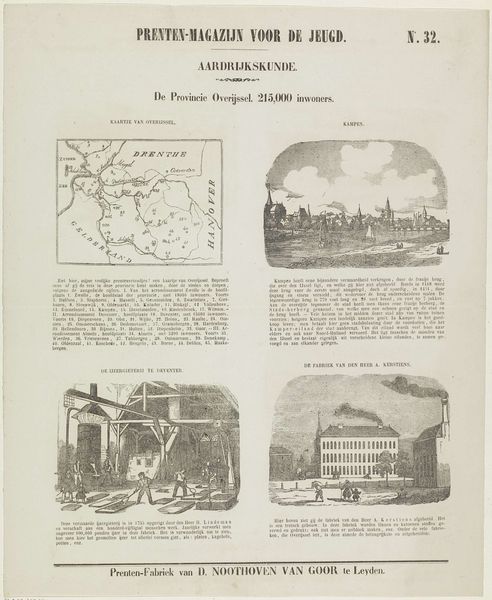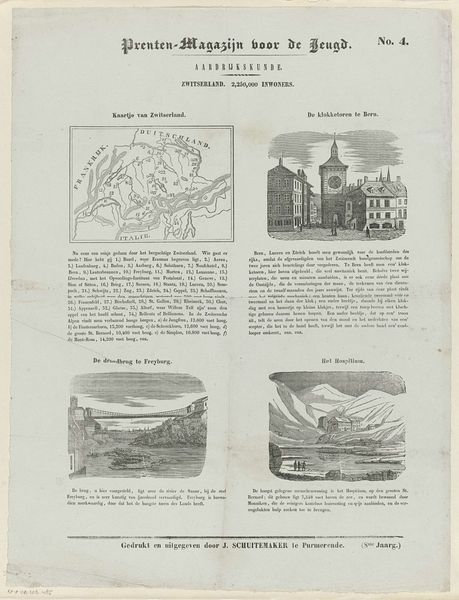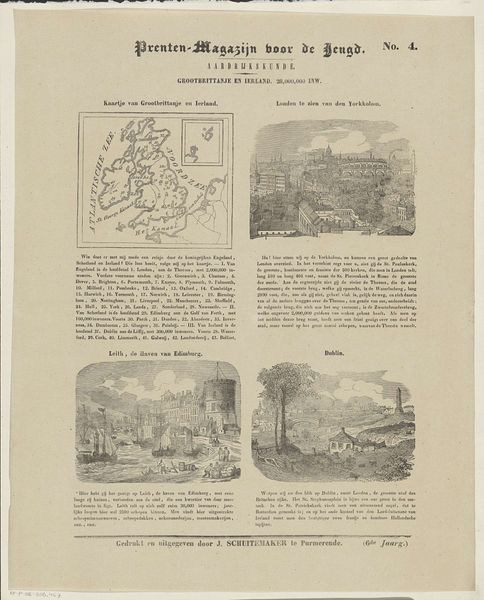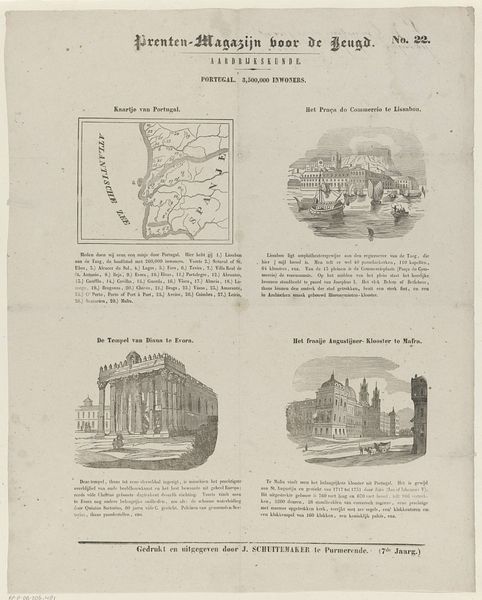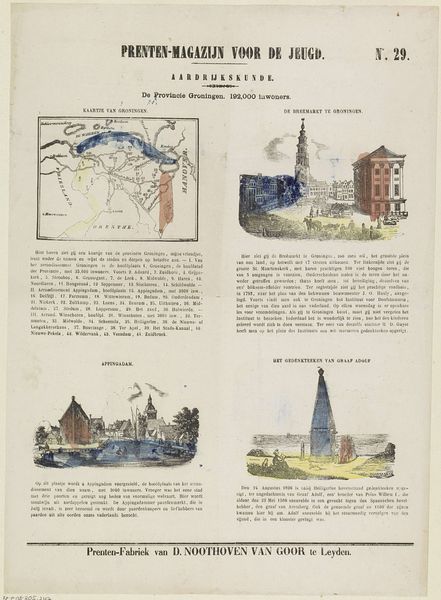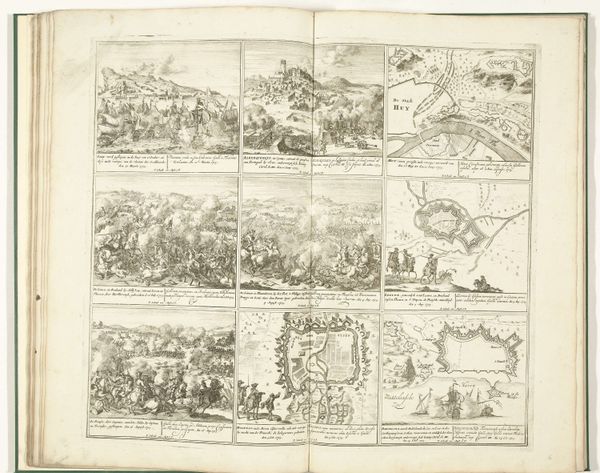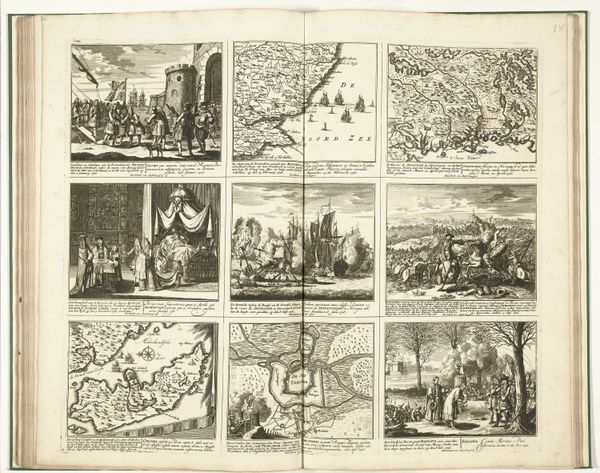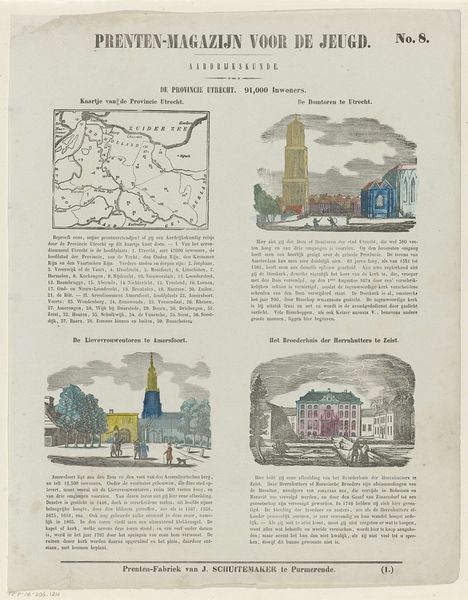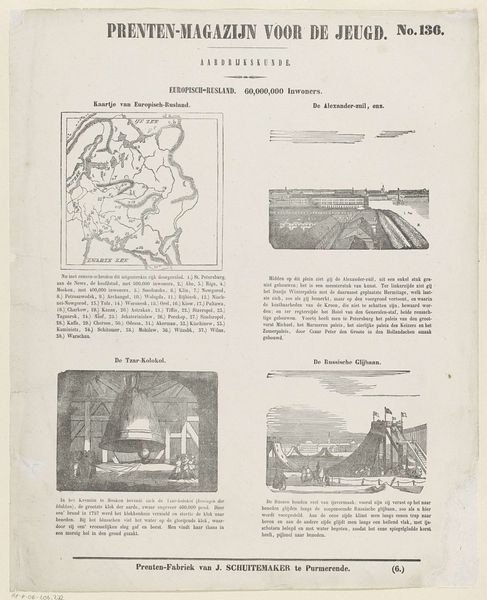
graphic-art, print, engraving
#
graphic-art
#
16_19th-century
# print
#
landscape
#
history-painting
#
engraving
Dimensions: height 415 mm, width 296 mm
Copyright: Rijks Museum: Open Domain
Editor: Here we have “De provincie Zeeland,” a print by Willem Bal, created sometime between 1850 and 1881. It appears to be a collection of different scenes in the province. Given the varied imagery and almost textbook-like presentation, I’m wondering what its purpose might have been. How do you interpret this work in terms of its social context? Curator: This image strikes me as a fascinating piece of visual propaganda and perhaps even historical revisionism packaged for juvenile consumption. Consider its placement within a “Prenten-Magazijn voor de Jeugd”—literally, a picture magazine for youth. What lessons about Zeeland are being imparted through these carefully chosen scenes? Editor: Lessons? You think it's pushing a particular agenda? Curator: Absolutely. Note the scenes: a detailed map perhaps instilling regional pride or awareness, a dramatic shipwreck narrative reinforcing Zeeland’s maritime identity and its struggles against the sea. There's even a church ablaze! All contribute to a constructed narrative of Zeeland's history and character, one aimed at shaping the values and beliefs of young readers, through a blend of geography, tragedy, and even civic pride displayed by the statue of Jacob Cats. Who controls the narrative, controls the present. What do you think, do these isolated events make for cohesive, if not somewhat forced, Zeeland identity? Editor: It's eye-opening how these images, seemingly innocent, are carefully selected to construct a specific idea of Zeeland for young audiences. I never considered how even something like a children’s magazine could play a role in shaping public perception of history and regional identity. Curator: Precisely. By examining the magazine’s images we gain understanding of historical manipulation tactics, a stark reminder to approach seemingly innocuous cultural artefacts critically.
Comments
No comments
Be the first to comment and join the conversation on the ultimate creative platform.
